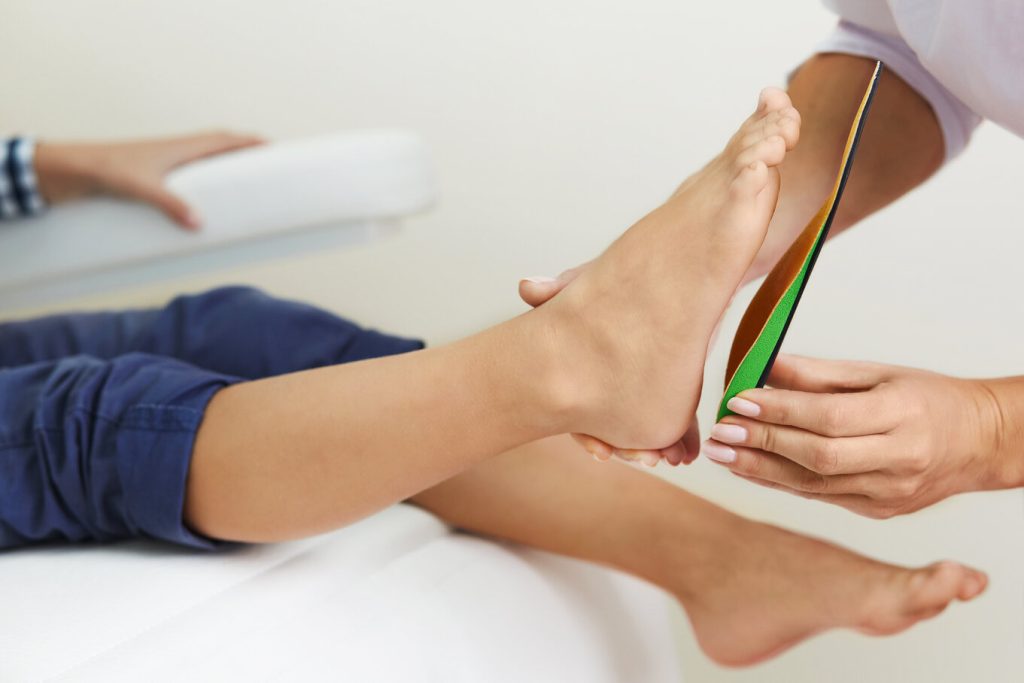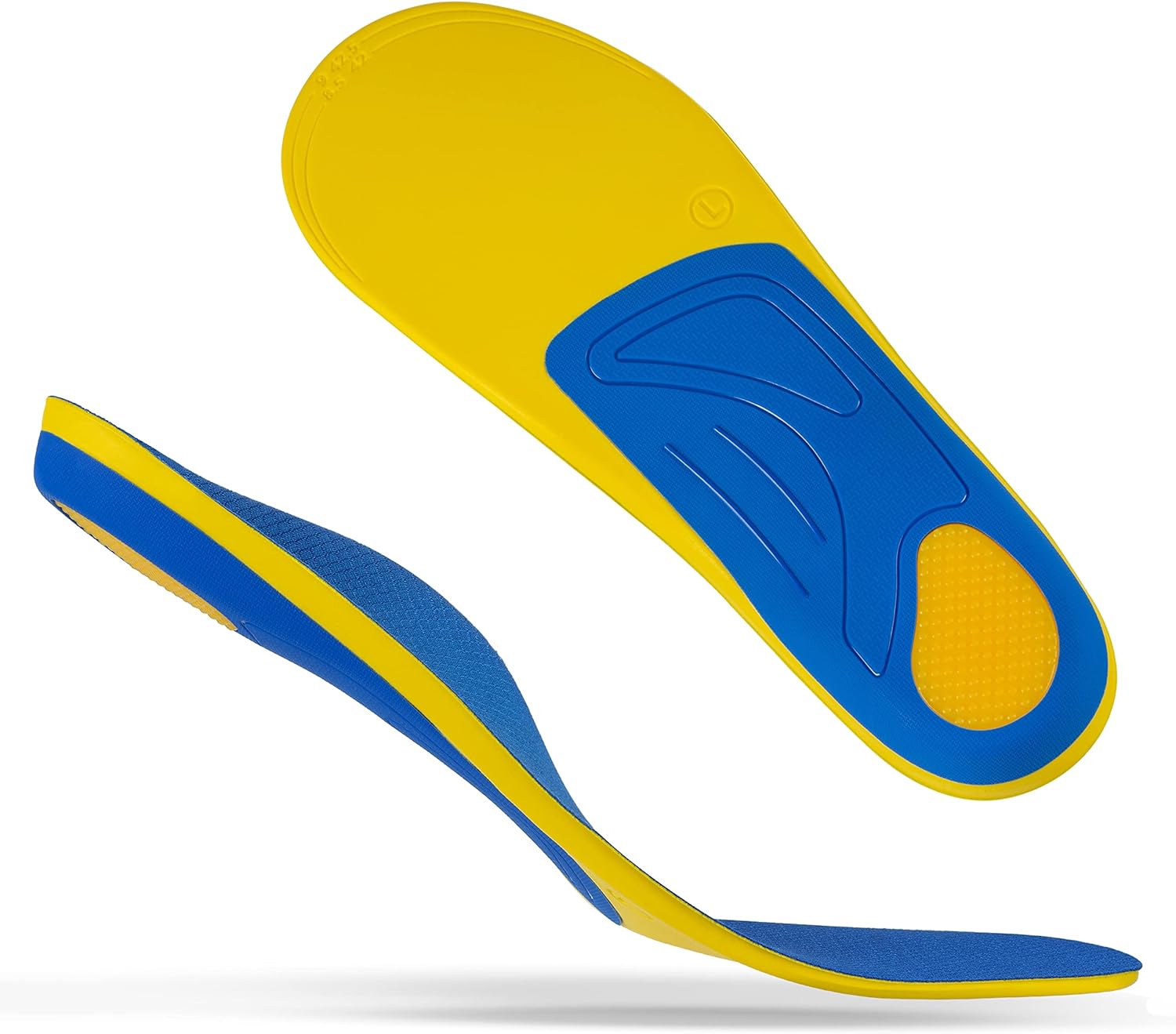Flat feet, also known as fallen arches, can cause discomfort and affect your overall foot health. Finding the right arch support is crucial to provide the necessary lift and support for individuals with flat feet.
Understanding Flat Feet

Flat feet occur when the arches of the feet collapse, causing the entire sole of the foot to make contact with the ground. This condition can contribute to various issues, including foot pain, shin splints, and knee problems. Choosing the best arch support for flat feet involves addressing these concerns.
Causes of Flat Feet
Genetics:
Flat feet can be inherited. If your parents or close relatives have flat feet, there’s an increased likelihood that you may have them as well.
Weak Arch Muscles:
Insufficient development or weakness in the muscles that support the arch can contribute to the collapse of the arches.
Injury or Trauma:
Injuries to the foot or ankle, especially during childhood, can impact the structure of the foot and lead to flat feet.
Age and Wear:
The natural aging process can cause the tendons and ligaments in the feet to lose elasticity, potentially resulting in fallen arches.
Symptoms of Flat Feet
Pain and Discomfort:
Individuals with flat feet may experience pain or discomfort, especially in the arch area or along the inner side of the ankle.
Swelling:
Swelling in the inner area of the ankle is a common symptom, particularly after prolonged periods of standing or walking.
Difficulty in Footwear Selection:
People with flat feet may find it challenging to select comfortable footwear, as arch support becomes crucial for alleviating discomfort.
Overpronation:

Overpronation, where the foot rolls excessively inward while walking, is a common gait issue associated with flat feet.
Managing Flat Feet
Orthotic Inserts:
Custom orthotic inserts provide tailored support to address the specific needs of flat feet. These inserts can be obtained through consultation with a podiatrist.
Supportive Footwear:
Choosing shoes with proper arch support is essential. Look for stability running shoes or orthopedic footwear designed to provide the necessary lift for fallen arches.
Strengthening Exercises:
Specific exercises can help strengthen the muscles supporting the arch. This includes activities like toe curls, arch lifts, and calf stretches.
Professional Guidance:
Consulting with a podiatrist or orthopedic specialist is advisable for a comprehensive understanding of your specific condition and personalized recommendations.

Orthotic Inserts for Custom Support
For individuals grappling with flat feet, custom orthotic inserts emerge as a transformative solution. These inserts are not just off-the-shelf products; rather, they are meticulously crafted based on a personalized analysis of your foot structure. The aim is simple yet profound: to provide targeted support precisely where it’s needed the most.
Crafted for You
Custom orthotics start with a consultation with a podiatrist, a foot specialist. During this process, your podiatrist conducts a thorough examination, considering factors like your foot arch type, gait, and any existing foot conditions. This personalized analysis forms the basis for crafting orthotic inserts that cater specifically to your unique foot structure.
Targeted Support
The beauty of custom orthotic inserts lies in their ability to address your individual needs. Whether you have high arches, low arches, or an irregular foot structure, these inserts are designed to provide targeted support. By aligning with the contours of your feet, they work to counteract the collapse of arches associated with flat feet.
Obtaining Custom Orthotics
Unlike mass-produced insoles, custom orthotics are not bought off the shelf. Instead, they are obtained through a professional consultation. Your podiatrist may take molds or use advanced scanning technology to capture precise details of your feet. This ensures that the resulting orthotic inserts are tailor-made to fit you perfectly.
Arch Support Insoles
If the idea of custom orthotics feels too specialized or you’re looking for a more accessible solution, arch support insoles designed for flat feet are an excellent alternative. These specially crafted insoles are readily available, providing a convenient and effective way to address fallen arches.
Firm Arch Support
When selecting arch support insoles for flat feet, prioritize those with firm arch support. This characteristic is crucial for lifting fallen arches and redistributing pressure evenly across the foot. The firm support not only promotes better alignment but also contributes to reducing strain and discomfort associated with flat feet.
Promoting Better Alignment
Arch support insoles act as a simple yet impactful intervention. By providing the necessary lift to the arches, these insoles help in promoting better alignment during daily activities. Whether walking, standing, or engaging in physical exercise, the insoles work to alleviate the challenges posed by flat feet.
Stability Running Shoes
Engineered Support:
Stability running shoes are a stellar choice for those with flat feet. These shoes are purposefully engineered with built-in arch support and motion control features. The arch support provides the lift needed for fallen arches, contributing to improved foot alignment.
Extra Stability:
What sets stability running shoes apart is their emphasis on providing extra stability. This is particularly beneficial for individuals with flat feet, as it helps counteract overpronation – a common issue associated with this condition. The shoes work to control excessive inward rolling of the foot during each stride.
Reputable Brands:
When considering stability running shoes, opt for reputable brands known for prioritizing foot health in their designs. These brands often invest in research and technology to create footwear that not only offers support but also ensures durability and comfort.
Orthopedic Shoes
Designed for Foot Conditions:
Orthopedic shoes are a specialized category designed to address various foot conditions, including flat feet. They go beyond typical footwear by providing specific features to enhance foot health.
Ample Arch Support:
One of the standout features of orthopedic shoes is the ample arch support they offer. This support is crucial for individuals with flat feet, helping to maintain the arch’s natural shape and preventing excessive flattening during weight-bearing activities.
Customizable Support:
Many orthopedic shoes come with removable insoles, allowing you to customize the support level according to your needs. This adaptability ensures that you can fine-tune the footwear to provide the most comfortable and effective support for your flat feet.
Firm Arch Support:
Counteracting Lack of Natural Arch:
The primary goal of arch support for flat feet is to counteract the absence of a natural arch. Opt for arch supports that provide firm, structured support. This helps in lifting fallen arches, redistributing weight evenly, and reducing strain on the foot.
Even Weight Distribution:
Firm arch support plays a crucial role in promoting even weight distribution across the foot. By offering stability, it helps prevent excessive pressure on specific areas, minimizing the risk of discomfort or pain associated with flat feet.
Cushioning for Comfort:
Balancing Stability and Comfort:
While firm support is vital, cushioning adds an extra layer of comfort. Look for arch supports that strike a balance between stability and cushioning. This combination ensures that your walking or running experience remains comfortable, even during extended periods.
Enhanced Walking Experience:
Cushioning in arch supports enhances the overall walking or running experience. It provides a soft and supportive base, absorbing impact and reducing stress on the feet. This is particularly beneficial for individuals with flat feet who may experience increased pressure during motion.
Breathability:
Preventing Moisture Buildup:
Breathability is a crucial factor, especially for individuals with flat feet who may be more prone to conditions like overpronation. Arch supports or footwear with good breathability prevent moisture buildup, reducing the risk of discomfort and potential complications.
Addressing Overpronation:
Overpronation, common in individuals with flat feet, can lead to increased sweat and moisture. Breathable arch supports mitigate this by allowing proper air circulation, maintaining a dry and comfortable environment for the feet.

FAQs About Flat Feet and Arch Support
Q: Can flat feet be corrected with arch support?
Flat feet can be managed and supported with the right arch support, but complete correction may not always be possible.
Q: Are there exercises to strengthen arches for flat feet?
Yes, specific exercises can help strengthen the muscles supporting the arch. However, consult with a healthcare professional for guidance.
Q: How often should I replace arch support for flat feet?
Regularly assess the condition of your arch support and replace them if they show signs of wear or loss of support.
Q: Can children with flat feet benefit from arch support?
Consult a pediatrician or podiatrist for guidance on whether arch support is suitable for children with flat feet.
WHERE TO BUY
In conclusion, the best arch support for flat feet involves a combination of custom orthotics, arch support insoles, and supportive footwear. By choosing products with firm arch support, adequate cushioning, and addressing individual needs, individuals with flat feet can find relief and support for their unique foot structure.
